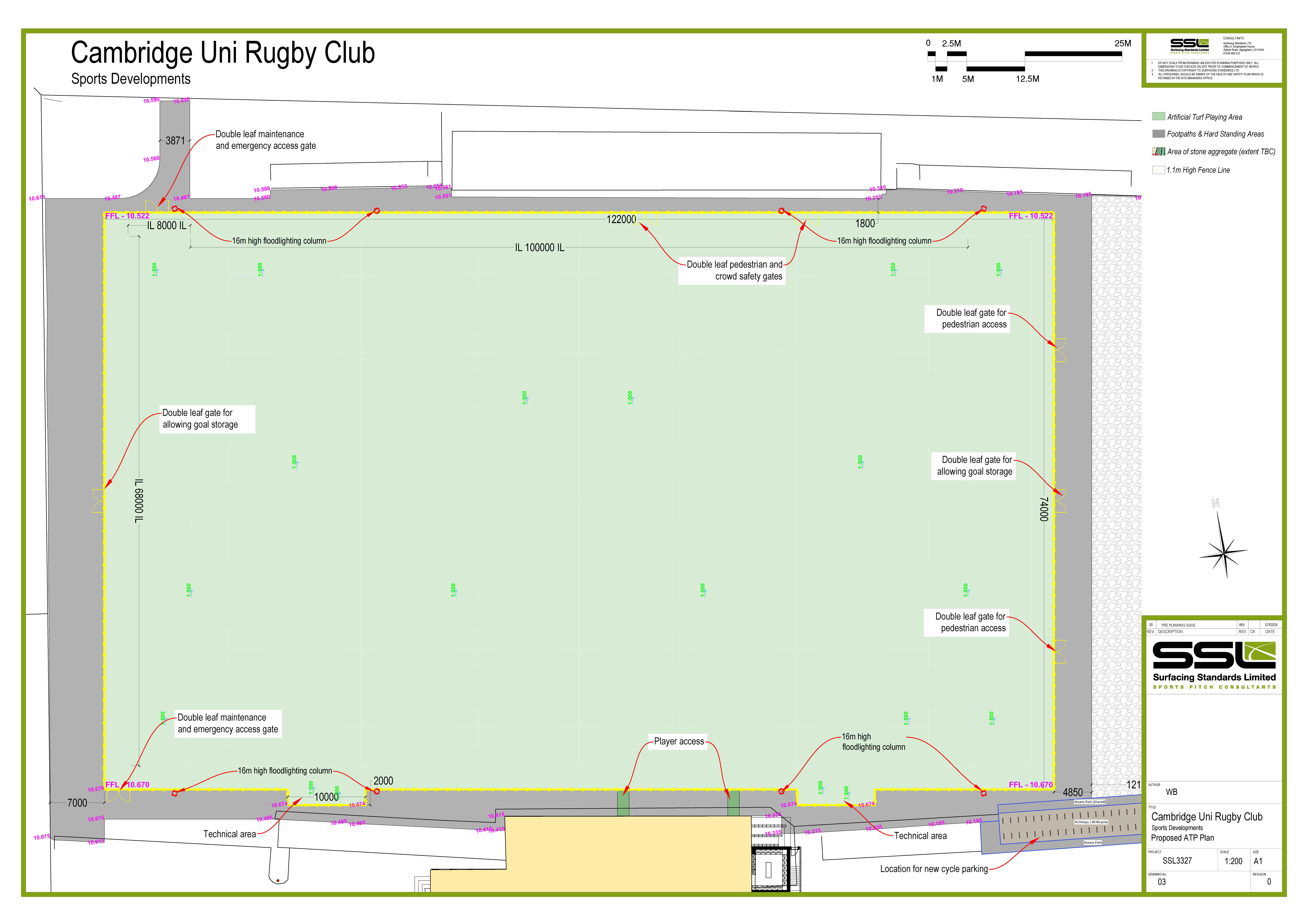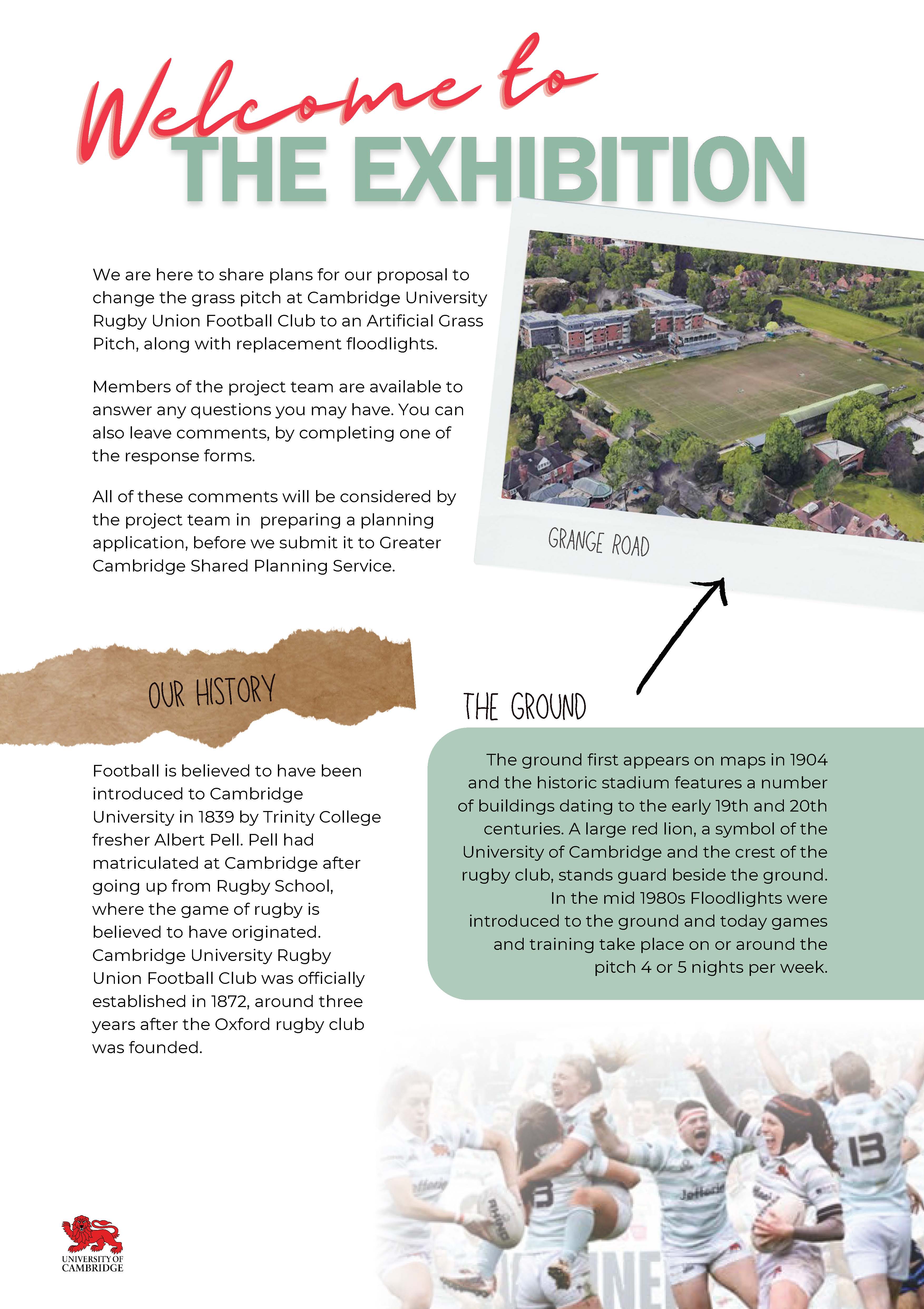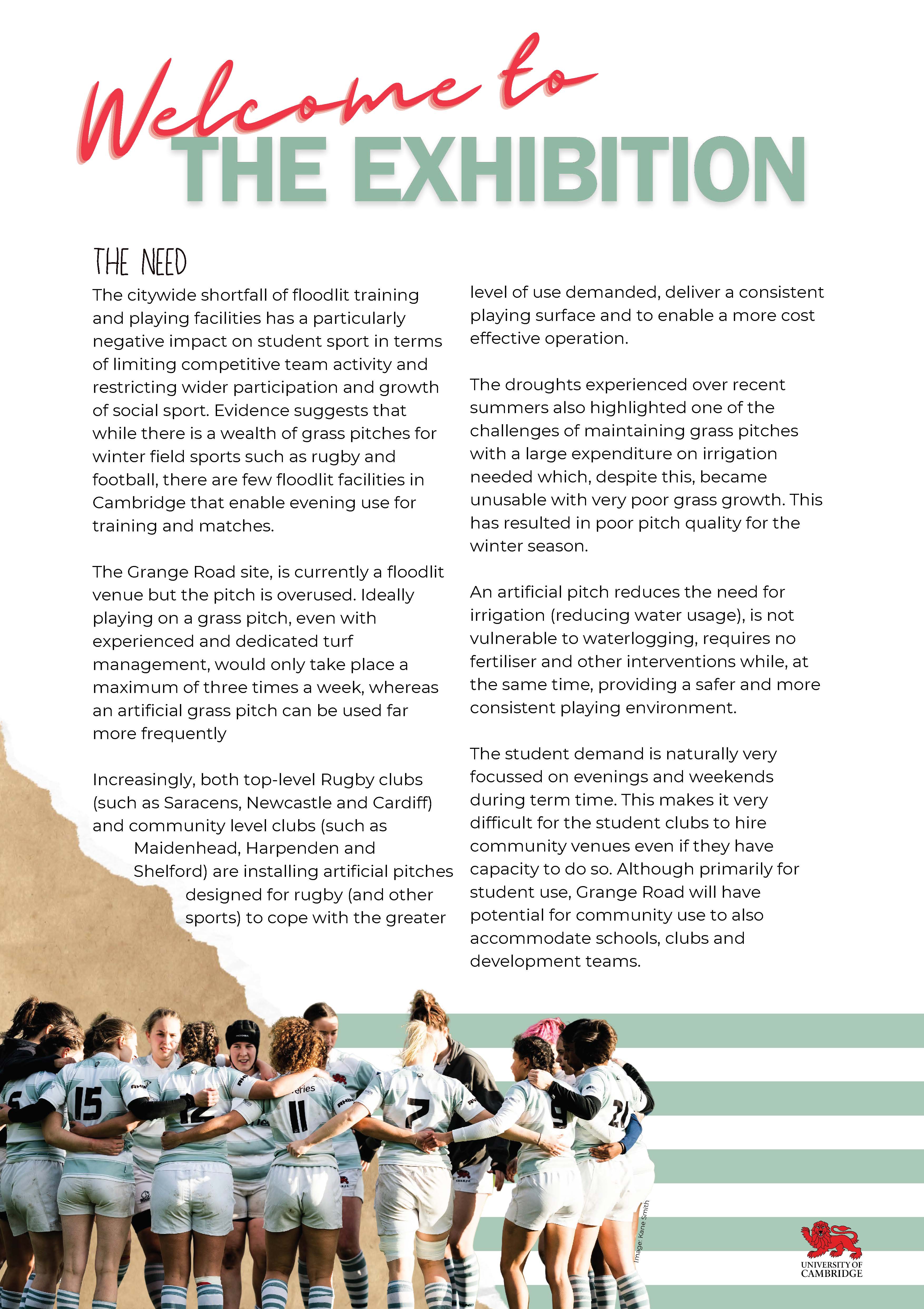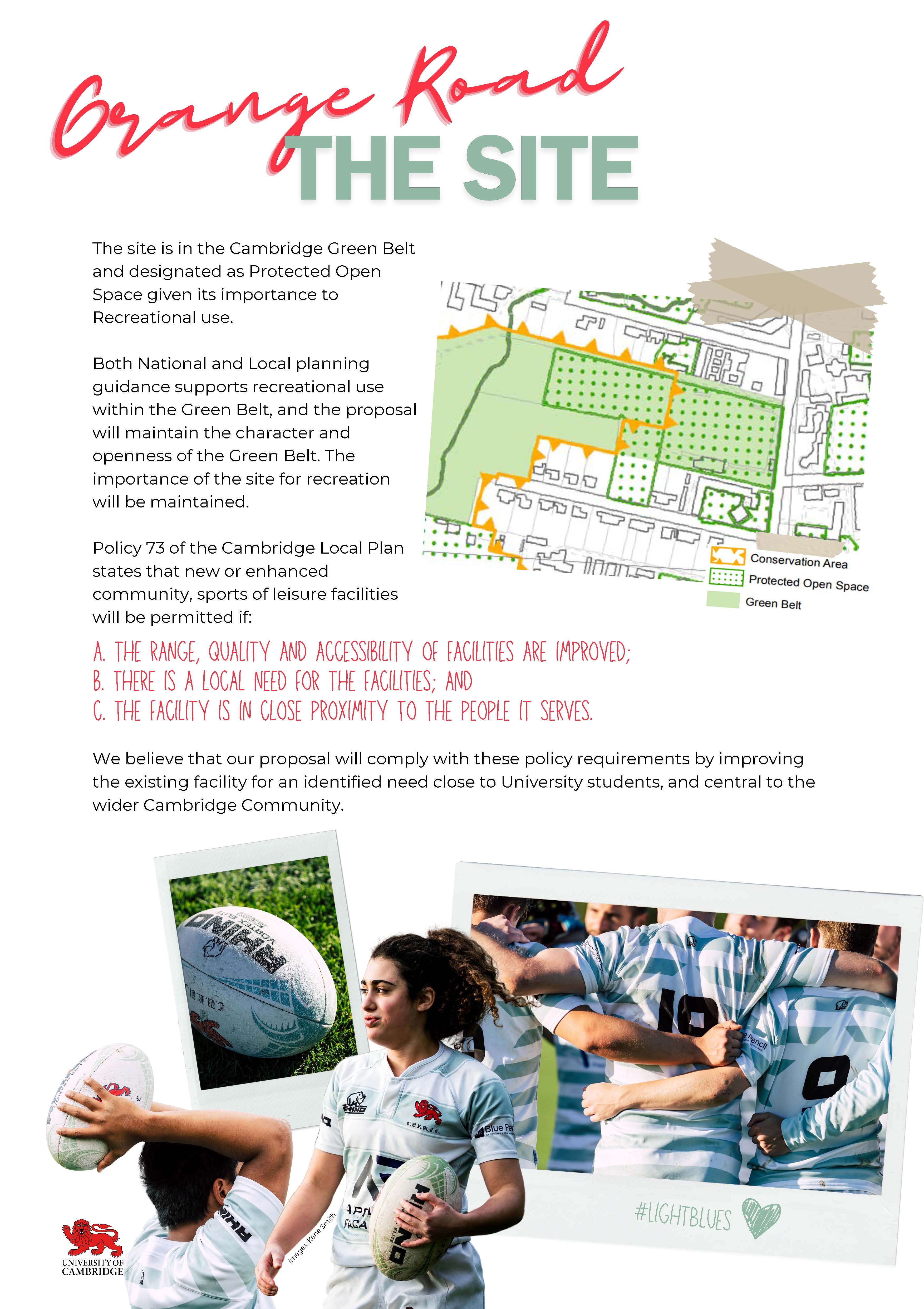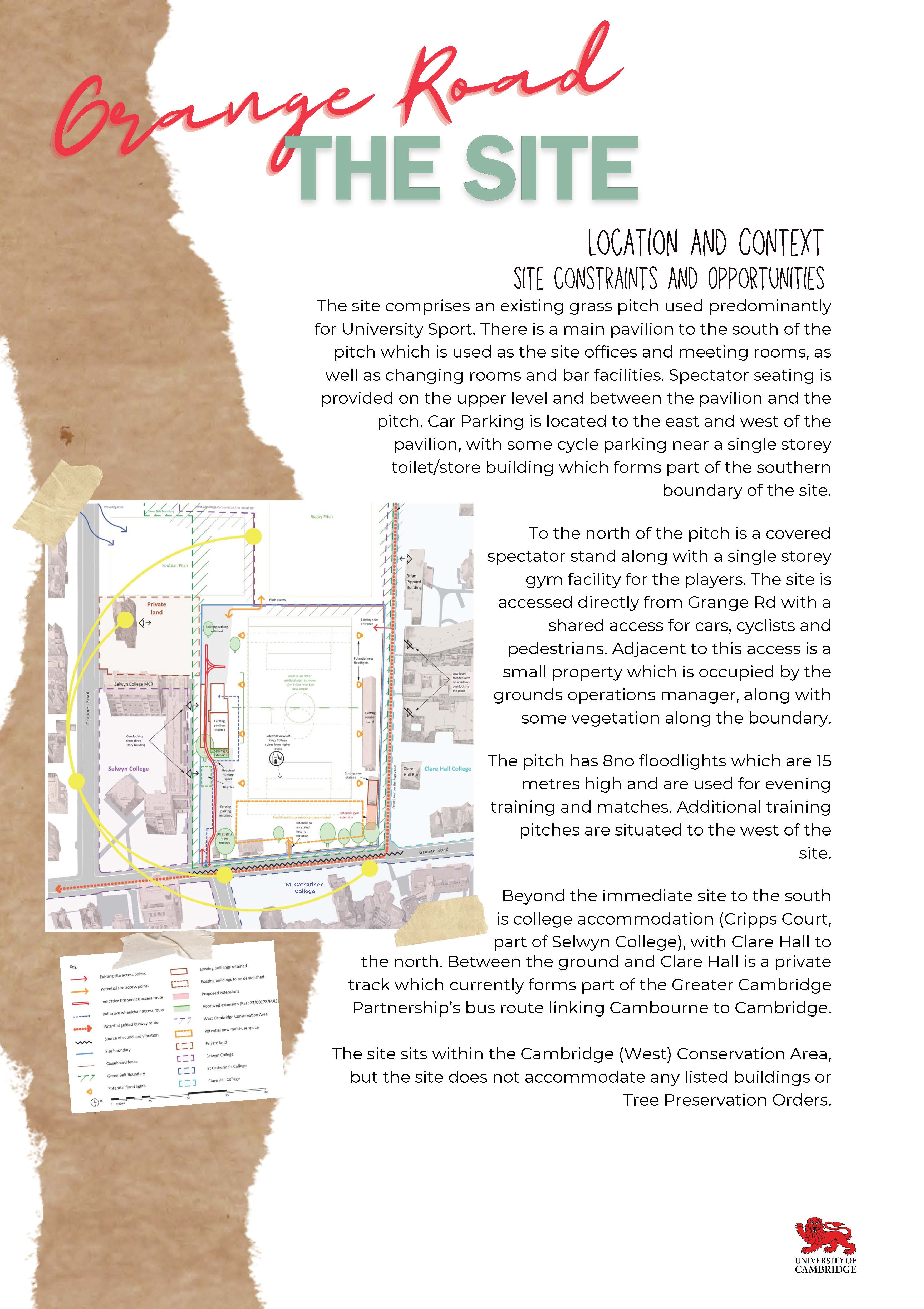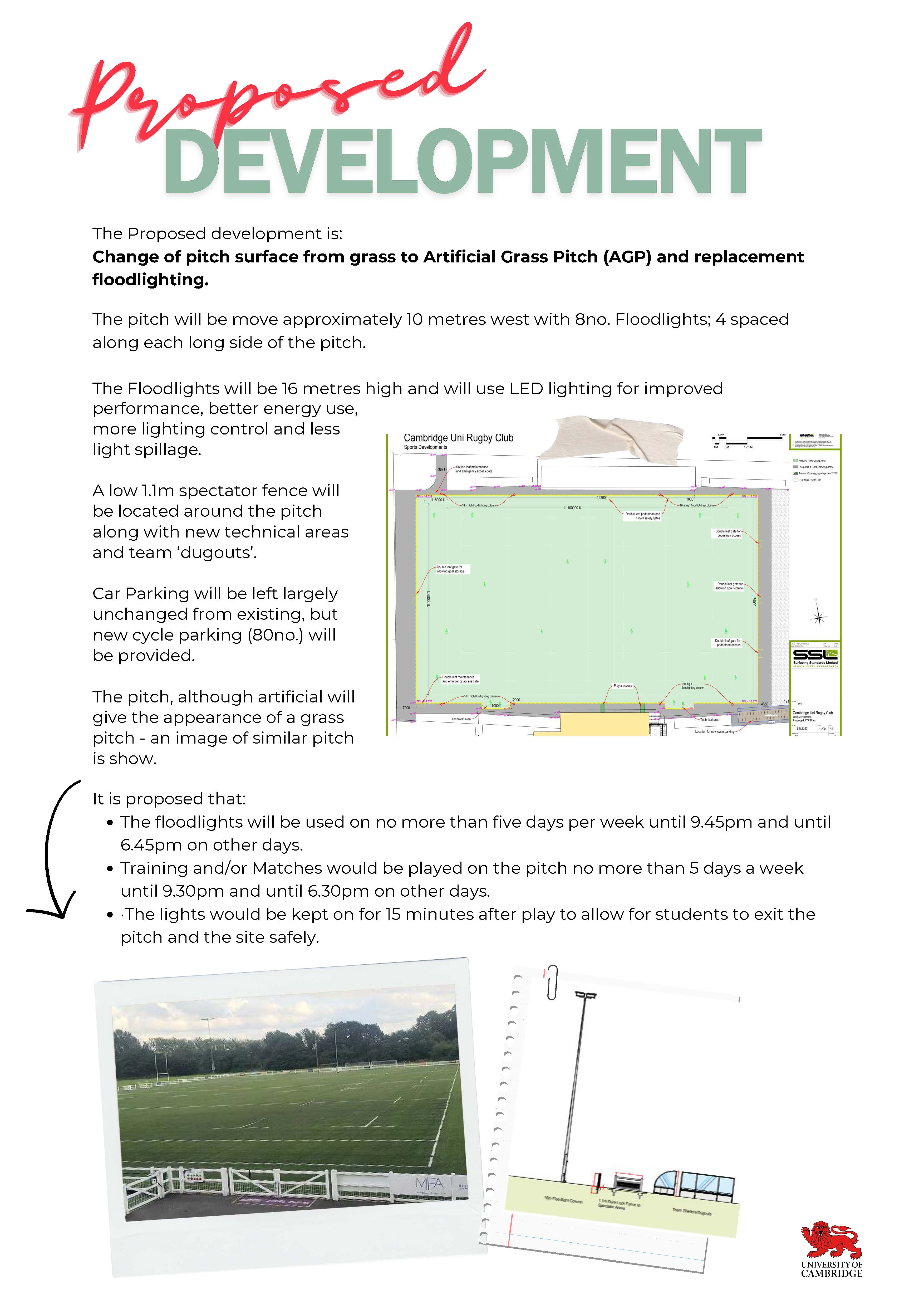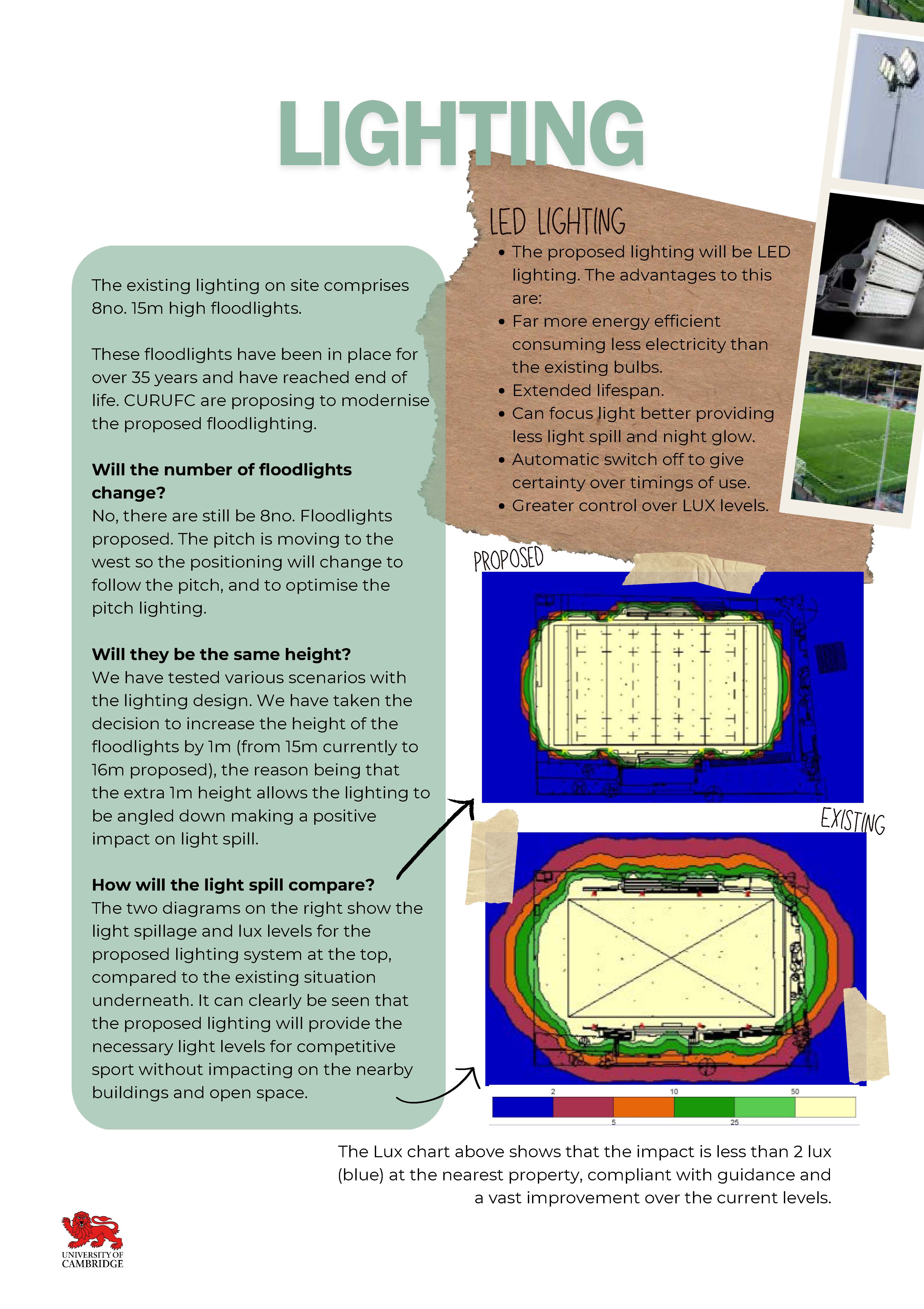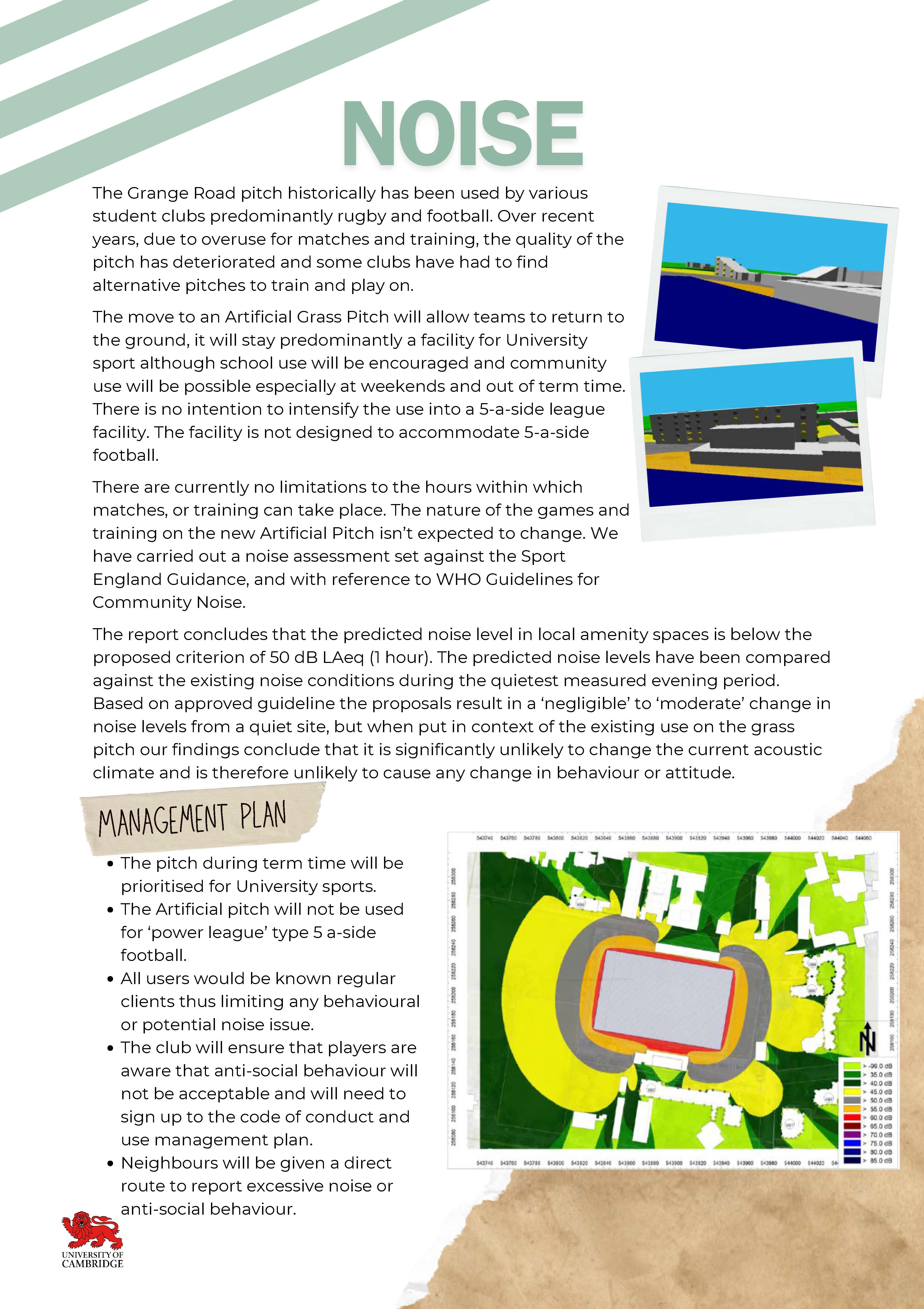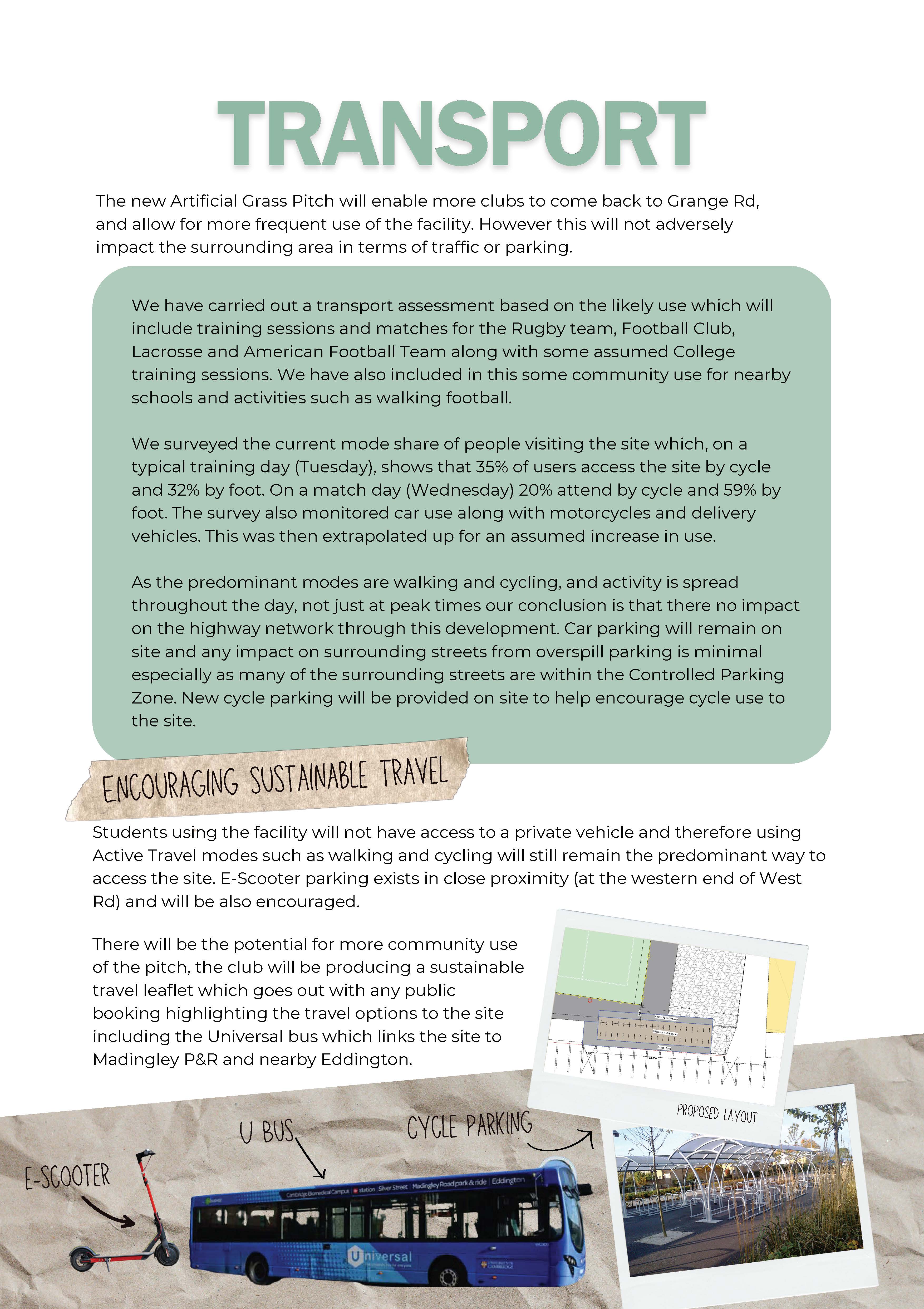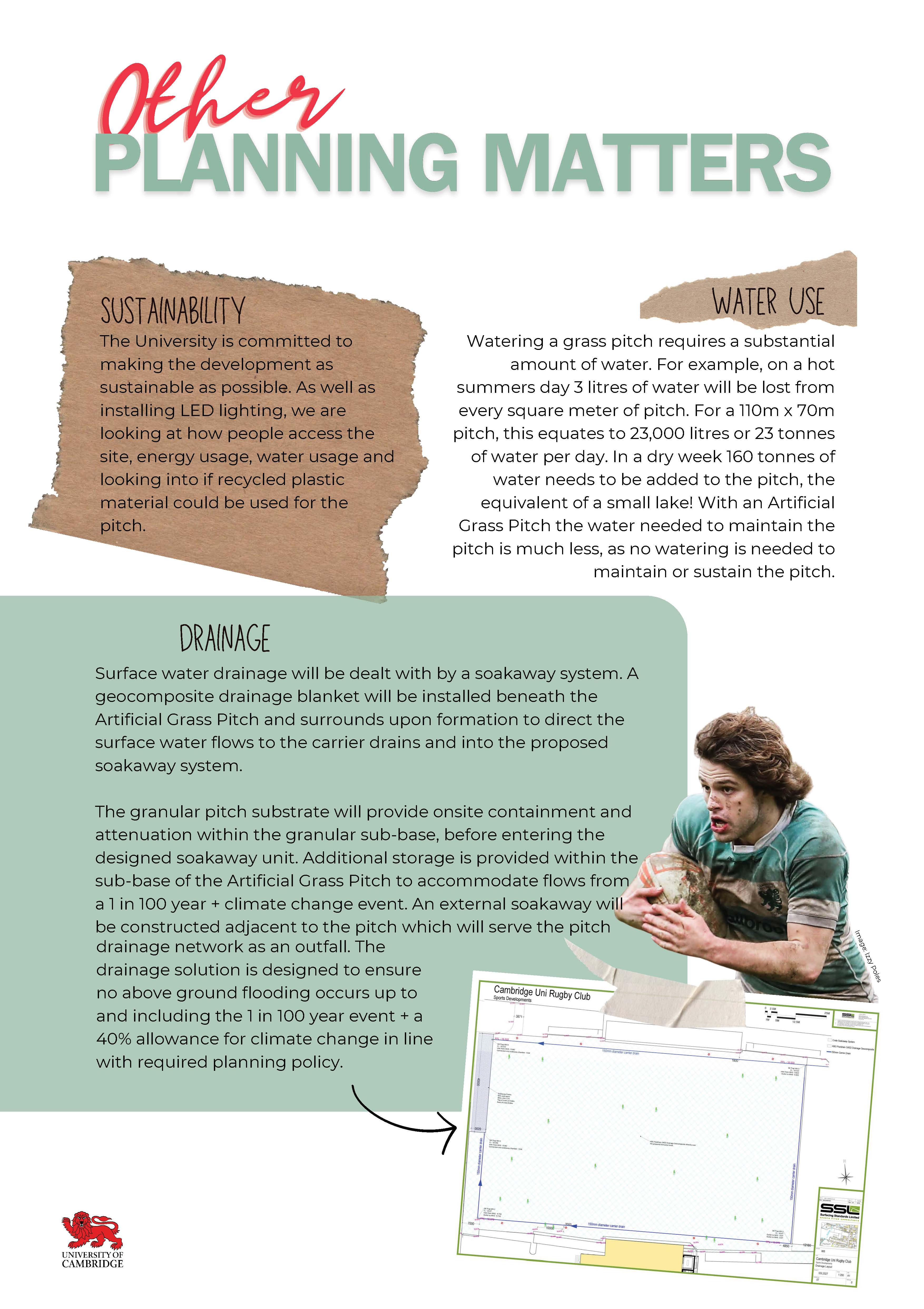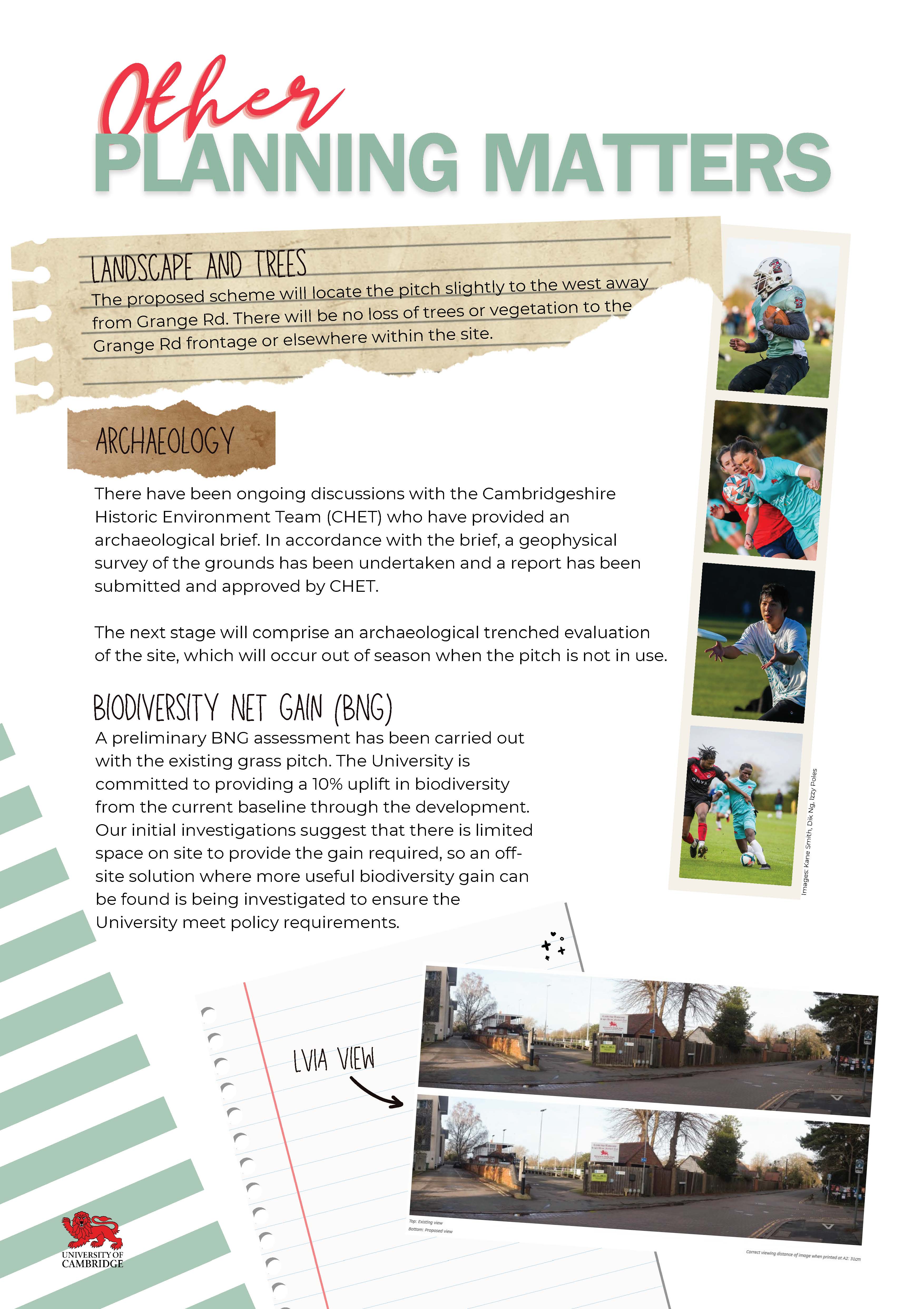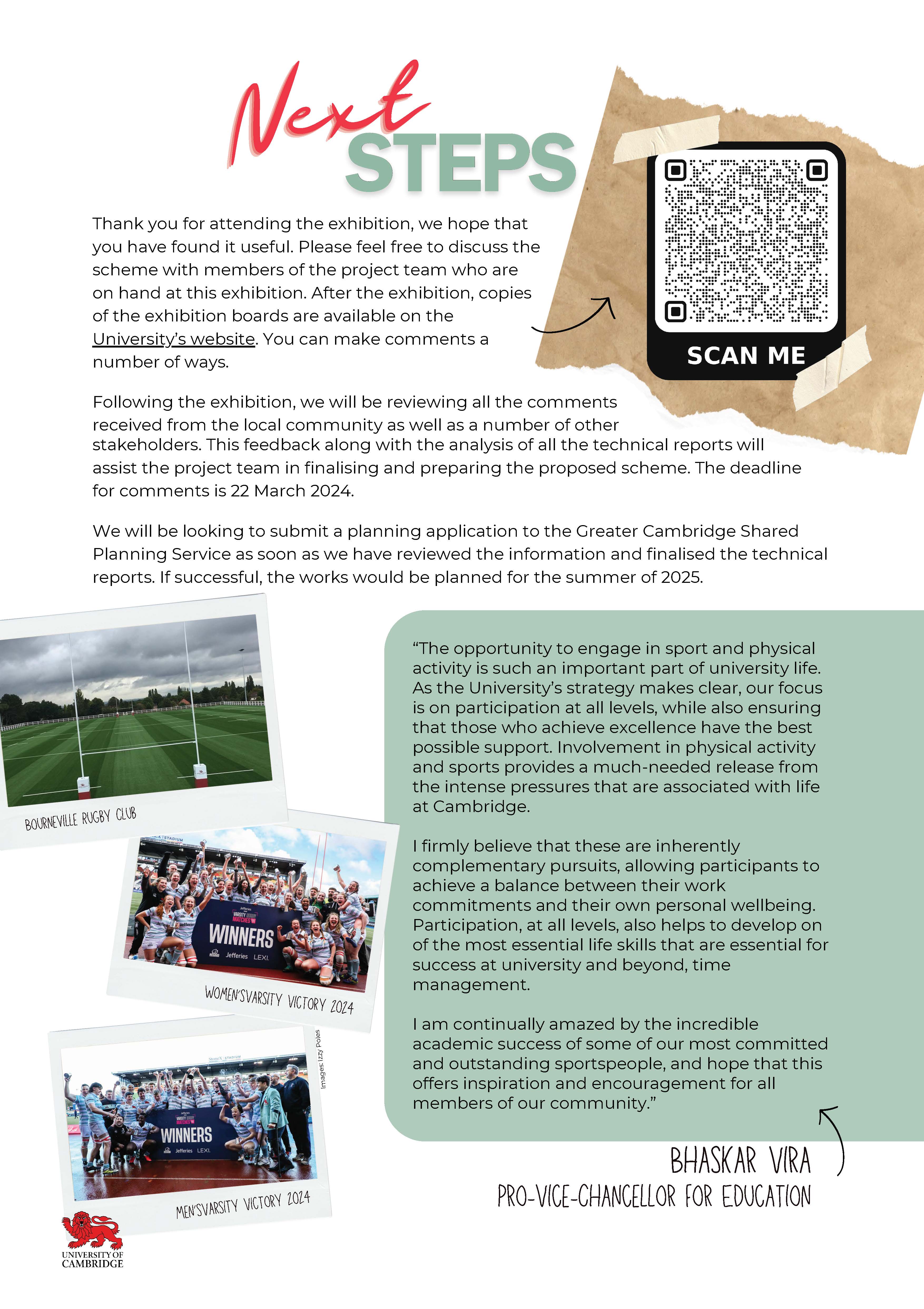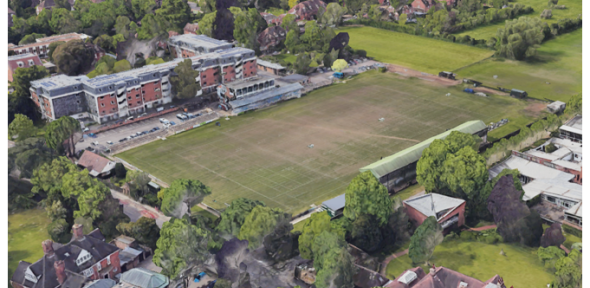
The University of Cambridge is consulting on proposals to change the grass pitch at Cambridge University Rugby Union Football Club (CURUFC) on Grange Road to an Artificial Grass Pitch, along with replacement floodlights.
What is proposed?
- Change of pitch surface from grass to Artificial Grass Pitch (AGP) and replacement floodlighting. The pitch, although artificial will give the appearance of a grass pitch.
- Eight replacement floodlights (four along each long side of the pitch). The Floodlights will be 16 metres high (1 metre taller than currently) and will use LED lighting for improved performance, better energy use, more lighting control and less light spillage. The extra 1m height allows the lighting to be angled down.
- A low 1.1m spectator fence will be located around the pitch along with new technical areas and team ‘dugouts’
- New cycle parking for 80 bikes to encourage cycle use.
It is proposed that:
- The floodlights will be used on no more than five days per week until 9.45pm and until 6.45pm on other days. Training and/or Matches would be played on the pitch no more than 5 days a week until 9.30pm and until 6.30pm on other days. The lights would be kept on for 15 minutes after play to allow for students to exit the pitch and the site safely.
We have carried out technical analysis of the light spillage and LUX levels from the existing floodlights and compared it to the proposed replacement floodlights. Advances in lighting design and LED lights mean that we can now provide the necessary light levels for competitive sport while reducing the light spill and ensuring no impacting on nearby buildings and open space.
A noise assessment set against the Sport England Guidance, and with reference to WHO Guidelines for Community Noise has been carried out. The predicted noise level is below the proposed criterion of 50 dB LAeq (1 hour). Based on approved guidelines the proposals result in a ‘negligible’ to ‘moderate’ change in noise levels compared with when it is at its quietest, but it is significantly unlikely to change the current noise levels.
The University is committed to making the development as sustainable as possible. As well as installing LED lighting, we are looking at how people access the site, energy usage, water usage and looking into if recycled plastic material could be used for the pitch. The University is committed to providing a 10% uplift in biodiversity from the current baseline through the development.
We will be looking to submit a planning application to the Greater Cambridge Shared Planning Service as soon as we have reviewed the information and finalised the technical reports. If successful, the works would be planned for the summer of 2025.
How can I find out more or share comments?
A drop-in consultation event was held at the Rugby Club on Grange Road on Tuesday 12 March. You can view the exhibition boards from the event.
The comments from the event and those received from the local community, as well as a number of other stakeholders, will be reviewed. This feedback will be used to assist the project team in finalising and preparing the proposed scheme.
Why is it needed?
There is a citywide shortfall of floodlit training and playing facilities. Evidence suggests that while there is a wealth of grass pitches for winter field sports such as rugby and football, there are few floodlit facilities in Cambridge for training and matches. The Grange Road site, is currently a floodlit venue but the pitch is overused. Increasingly, both top-level Rugby clubs (such as Saracens, Newcastle and Cardiff) and community level clubs (such as Maidenhead, Harpenden and Shelford) are installing artificial pitches designed for rugby (and other sports) to cope with the greater level of use demanded, deliver a consistent playing surface and to enable a more cost effective operation.
An artificial pitch reduces the need for irrigation (reducing water usage), is not vulnerable to waterlogging, requires no fertiliser and other interventions while, at the same time, providing a safer and more consistent playing environment.
The Grange Road pitch is currently used predominantly for rugby and football. Over recent years, due to overuse for matches and training, the quality of the pitch has deteriorated and some clubs have had to find alternative pitches to train and play on. The move to an Artificial Grass Pitch will allow teams such as Rugby League and American Football to return to the ground. The student demand is naturally very focused on evenings and weekends during term time. This makes it very difficult for the student clubs to hire community venues even if they have capacity to do so. Although primarily for student use, Grange Road will have potential for community use to also accommodate schools, clubs and development teams.
History of CURUFC
Football is believed to have been introduced to Cambridge University in 1839 by Trinity College fresher Albert Pell. Pell had matriculated at Cambridge after going up from Rugby School, where the game of rugby is believed to have originated. Cambridge University Rugby Union Football Club was officially established in 1872, around three years after the Oxford rugby club was founded. The ground first appears on maps in 1904 and the historic stadium features a number of buildings dating to the early 19th and 20th centuries. A large red lion, a symbol of the University of Cambridge and the crest of the rugby club, stands guard beside the ground. In the mid 1980s Floodlights were introduced to the ground and today games and training take place on or around the pitch 4 or 5 nights per week.

